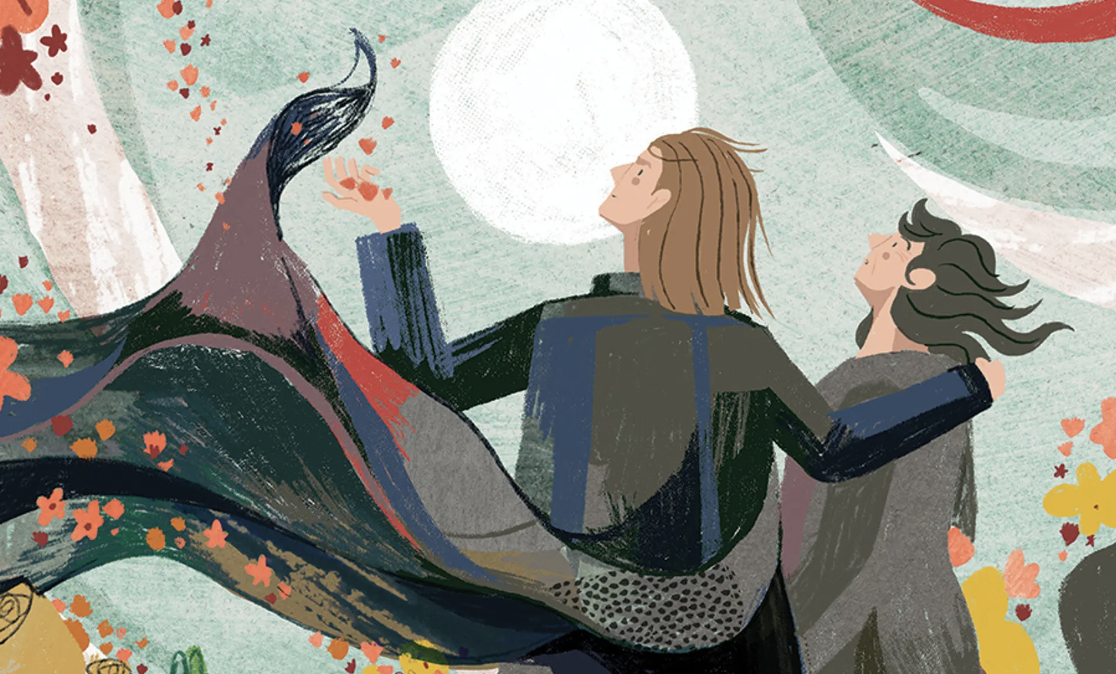Written By: Rylee Thomas
Howl’s Moving Castle is the story of a girl named Sophie who is transformed into an old woman by an evil witch. And it’s the best thing that could have ever happened to her.
I love Studio Ghibli, and their film version of Howl’s Moving Castle (2004) is a gorgeous work of art. The film portrays a sweet, comforting love story with a charming atmosphere and an intricately drawn steampunk aesthetic.

Unbeknownst to many Ghibli fans, however, the film is a literary adaptation of the novel of the same name (1986) by Diana Wynne Jones. The novel is my favorite childhood book, and it’s part of the trifecta of my favorite books (for children and adults alike) of all time.
While both versions of the story are fantastic, the novel has a little more bite to it, mixing common sense and humor to create a deeply funny satire with complex moving parts that fit together like a jigsaw puzzle. Jones communicates honestly with children and takes them seriously in her portrayal of all kinds of love: self-love, family love between sisters, parents, and children, and found family. While Sophie and Howl are wholesome and charming in the film, the Sophie and Howl of the book are, in fact, snarky, problematic faves. The film is a comforting hug, and the book is the funniest comedy I’ve ever experienced, and, in the book, Sophie and Howl steal the show.

Howl’s Moving Castle is THE novel for people-pleasers and eldest daughters everywhere, and I’m excited to tell you a little more about the plot of the story as Diana Wynne Jones originally wrote it.
Sophie, the eldest of three sisters living in the kingdom of Ingary, thinks she’s fated to be unsuccessful and doomed to a life of boredom and drudgery working in her family’s hat shop. She’s 18, but she already feels like she’s becoming an old woman (in a metaphorical sense). She accidentally starts making magical hats, and so the infamous Witch of the Waste drops by and curses Sophie to be an actual old woman.

As a young girl, Sophie was mouselike and afraid, but as an old woman, she’s free to be fearless and takes joy in having a combative personality. This is one thing that remains the same between the film and the novel. Sophie can’t learn to love herself until she’s allowed to be herself, which she can only do once she doesn’t feel the pressure to be a pretty, well-behaved 18-year-old girl.
Still, Sophie doesn’t want to die 60 years earlier than would have been natural, so she seeks the help of the wizard Howl, who floats around the kingdom ominously in his moving castle.
Sophie bullies Howl into taking her on as his cleaning lady. Howl is whiny, obsessed with his physical appearance, and an incorrigible womanizer. He’s also super charming and secretly caring. Sophie can’t tell anyone about her curse, but she works with Howl’s fire demon Calcifer to break the contract that binds Calcifer and Howl in exchange for Calcifer breaking Sophie’s curse. Meanwhile, unbeknownst to Sophie, Howl is trying to break Sophie’s curse, too, because he’s falling in love with her. But in the end, the only one who can break Sophie’s curse is Sophie herself. She comes into her own in her confidence and her magical abilities.

There are some excellent trope subversions in Howl’s Moving Castle that make my heart sing. Sophie has internalized fairytale gender norms that Howl challenges her about. Howl is a parody of a Byronic hero. While Howl floats around the countryside in his castle, the people in Market Chipping speculate about his vague tragic backstory, but Sophie eventually comes to realize that Howl is, in fact, no more and no less than a vain, silly, clever but lazy PhD student and Rugby player from Wales (i.e., a country from our world) who has somehow escaped to an alternate plane of reality where he became a powerful wizard. This isn’t part of the movie, which allows Howl to be a bit wiser and more mystical.
For my part, I prefer the snarky, silly Howl of the novel, who sings badly, lies even more badly, and flirts even more badly with Sophie by boasting about his wizard achievements. He signs letters yours alluringly, and he and Sophie throw weed killer at each other. While Sophie of the film is a sweet, wide-eyed girl who learns to love herself, Sophie of the novel also learns to love herself, but she is the most oblivious protagonist, and she won’t let anyone stand in her way. She is stubborn, practical, relentless, and forceful in the best way possible.
Everyone in the book version of Howl’s Moving Castle is so perfectly, humanly, and entertainingly flawed. I love Studio Ghibli so much, but Ghibli did not adapt all the drollery of the novel, and it’s a grudge I’ll always hold against them just the tiniest little bit. Nonetheless, I deeply appreciate and admire the beauty of the Ghibli animation and score. The score makes for a great creative writing backtrack if anyone happens to be working on writing a novel that happens to be whimsical or fantastical in any way.


You must be logged in to post a comment.